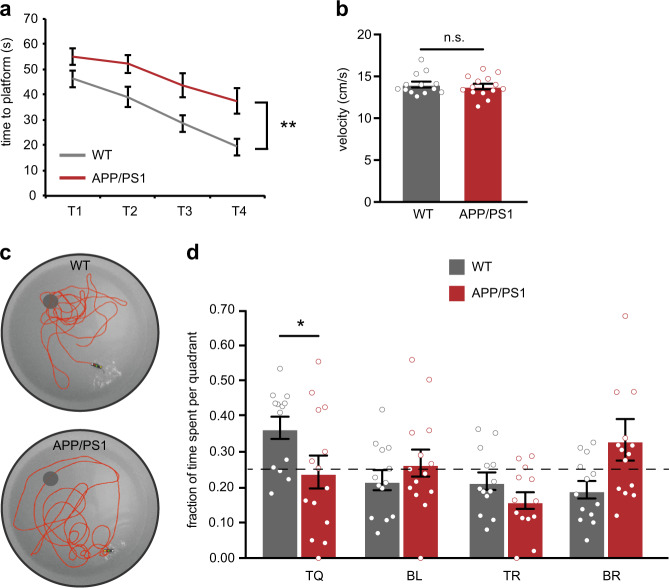Fig. 4.
Impaired hippocampal spatial learning and memory in APP/PS1 at 15–17 weeks of age. a Spatial learning was assessed at 15–17 weeks of age in a Morris water maze (MWM) by measuring the time required to find the hidden platform on 4 consecutive training days (T1–4). APP/PS1 mice showed a significant learning impairment (genotype × training two-way repeated measures ANOVA: n = 13/14 mice per genotype, F1,27 = 14.45, p = 0.001). b Average swim velocity during the training did not differ between APP/PS1 mice and WT controls (Student’s t test: n = 13/14 mice per genotype, p = 0.63). c Spatial memory was assessed measuring the relative time spent in each quadrant of the maze during a 1-min probe trial with the platform removed. d WT mice spent significantly more time in the target quadrant (TQ) compared with APP/PS1 mice (BR, bottom-right; BL, bottom-left; TR, top-right) (Student’s t test: n = 13/14 mice per genotype, *p < 0.05). Compared with chance level (dashed line), WT mice spent significantly more time in the target quadrant and APP/PS1 mice did not (Student’s t test: p < 0.05)

